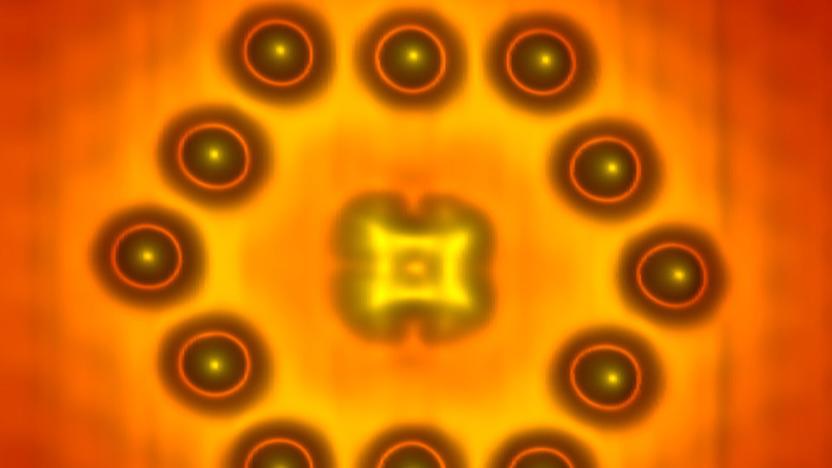indium
Latest

Scientists make a transistor from a single molecule
You're looking at what could be not just one of the smallest semiconductor parts ever, but one of the smallest semiconductor parts possible. A worldwide research team has built a transistor that consists of a single copper phthalocyanine molecule, a dozen indium atoms and an indium arsenide backing material. The trick was to abandon the usual mechanics of a transistor, which normally controls current by modulating the gate voltage, in favor of a field effect. Here, you only need to vary the distance of the gate (in this case, the atoms) to modulate electricity.

NC State builds stretchable wires from liquid metal, keeps headphones humming (video)
More than a few of us have had that moment of panic when our headphone cords catch on an object and cut the listening short -- sometimes permanently. Researchers at North Carolina State University could help mitigate those minor musical catastrophes with wiring that stretches up to eight times its normal length. The method fills an elastic polymer tube with a liquid gallium and indium alloy that delivers the electricity. By keeping the materials separate, unlike many past attempts, the solution promises the best of both worlds: the conduction we need, and the tolerance for tugs that we want. NC State already has an eye on stretchable headphone cords, as you'll see in the video after the break, but it also sees advantages for electronic textiles that could endure further abuse. As long as the team can eventually solve a problem with leakage when there's a complete break, we'll be glad enough to leave one of our common audio mishaps in the past.

Graphene could be used in creating solar cells, LCDs
Not to sound alarming or anything, but apparently, we've only got a decade or so before our planet runs clean out of indium. Thankfully for us, a team of researchers at the Max Planck Institute for Polymer Research in Germany are purportedly onto a replacement. For those in the dark, indium is a critical resource in "creating solar cells, LCD and other devices which must have transparent electrodes to carry out their function," but the aforementioned crew has seemingly been able to take graphene ("single layer 2D sheets extracted from the common material graphite") and build an acceptable alternative. The creation is 80-percent transparent to visible light and 100-percent transparent to infrared light, which could actually lead to solar cells capable of soaking up even more energy from more of the EM spectrum. 'Course, there's no telling how close this discovery is to being commercially viable, but we suppose we could always resurrect RPTVs and rely solely on wind farms for renewable energy if necessary, right? [Via DailyTech, image courtesy of About]

